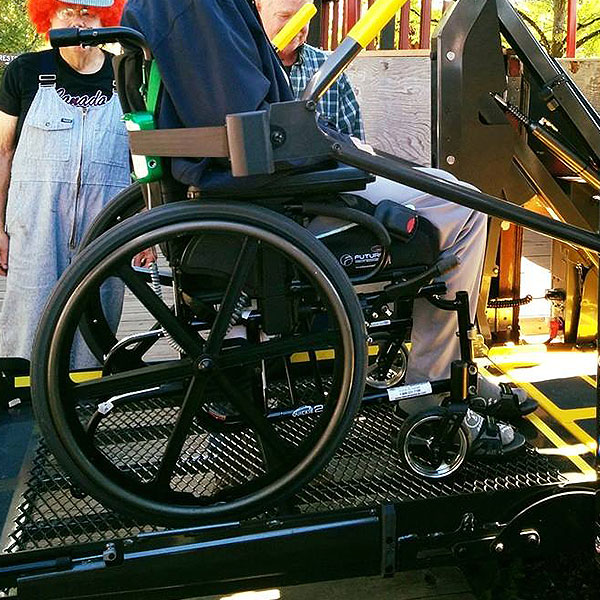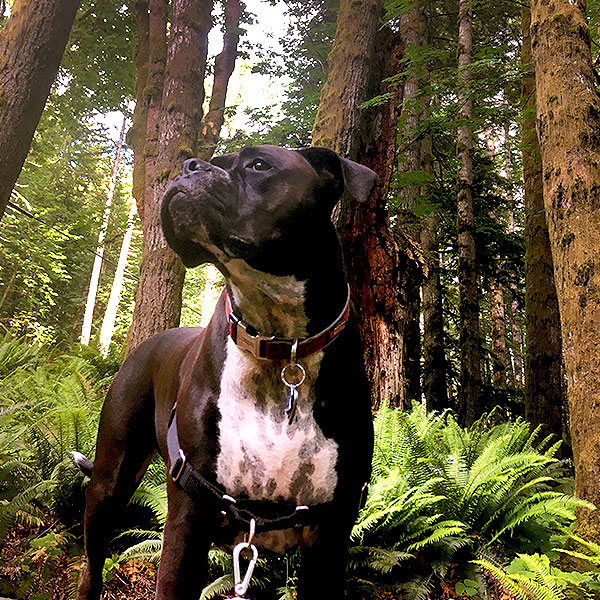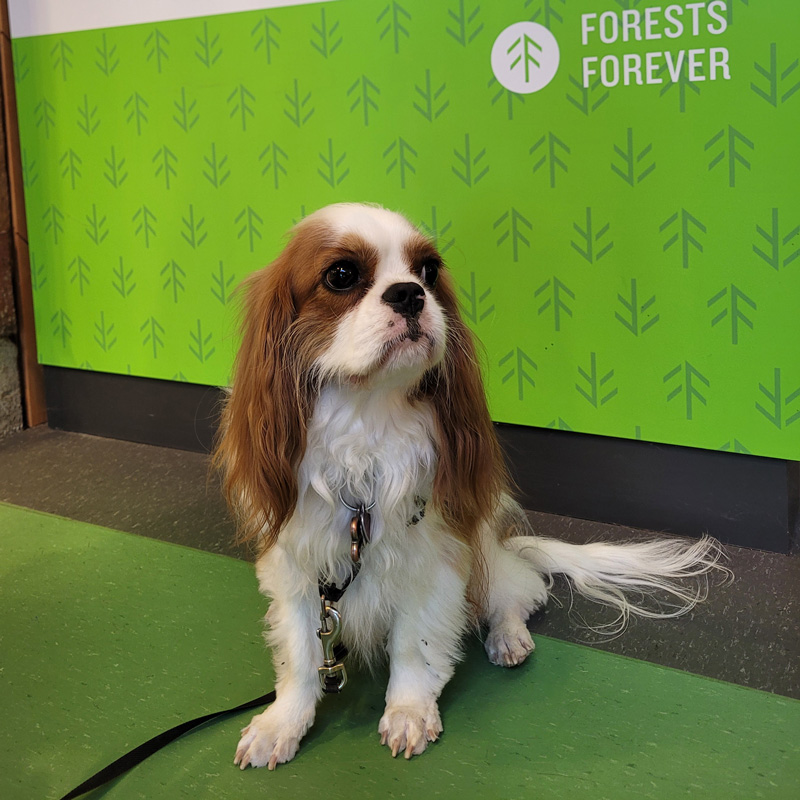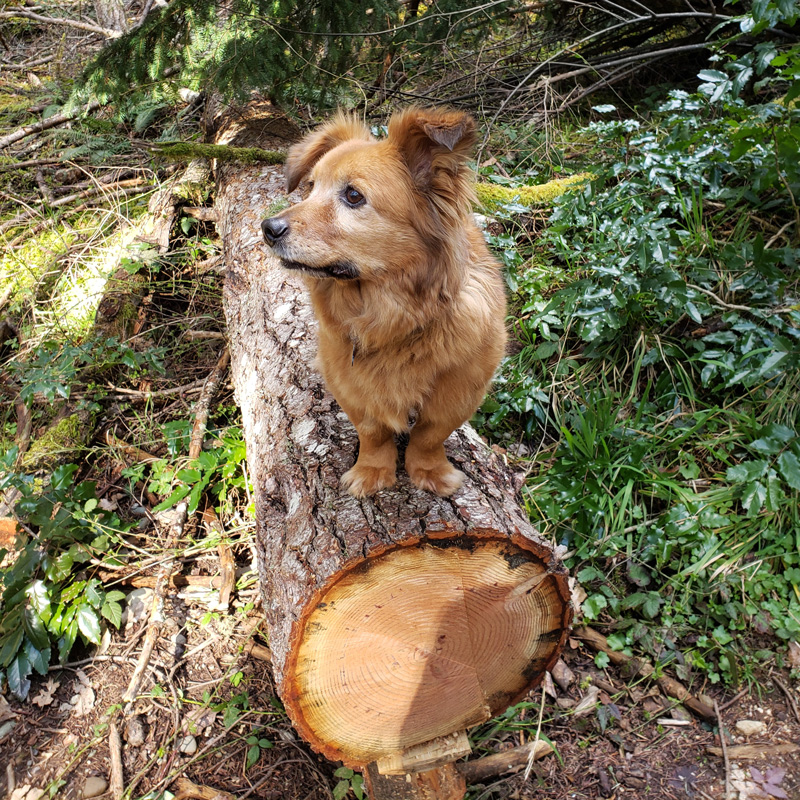About the Centre
The BC Forest Discovery Centre is a 100-acre, open air museum with an operational railway in Duncan, British Columbia. The Centre features forest and marsh trails with excellent bird watching opportunities. The story of BC’s forest industry is shared through exhibits, heritage buildings, and logging artifacts. Special events are offered throughout the year that include family activities and workshops for adults and seniors.
The Centre is operated by the BC Forest Museum Society, a non-profit and charitable organization (Federal Charitable Tax number 0521195-50-28).
Our Mandate
The BC Forest Discovery Centre is charged with collecting and preserving artifacts relevant to coastal forestry, as well as educating the public about life, work and the environment in forest communities of coastal British Columbia.
Our Vision
The BC Forest Discovery Centre is seen in its local community and around the province as a successful museum and superb attraction because of a visitor centered approach and effective partnerships resulting in a better understanding of the forest industry by the public and a secure financial future.
Accessibility

Currently, most main areas of the site are wheelchair accessible. Those areas include the main entrance and exhibit hall, the gas and steam trains, antique vehicle building, most heritage buildings, and the main walking trails. Wheelchair accessible portable toilets are on-site whenever the museum is open to the public. Designated parking stalls are available for people with mobility disabilities.
A few of the heritage buildings as well as the speeder are not wheel chair accessible at this time. Please check the train schedule to confirm that the gas or steam train will be running the day you plan to visit.
Caregivers and support workers are admitted free of charge if they accompany someone who is unable to visit the site without assistance.
The BC Forest Discovery Centre is working towards a more accessible site. Please contact us in advance of your visit to let us know if we can help make your day at the museum more accessible and enjoyable.
Pet Policy



The BC Forest Discovery Centre welcomes well-behaved leashed pets. During our Halloween and Christmas Events, we request that you leave your pets at home due to the high volume of guests in the Centre.
For the enjoyment of all guests visiting the BC Forest Discovery Centre we have implemented the following pet policies:
- Please ensure you are fully aware of what your pet is doing at all times.
- Pick up after your pet so that others do not step in anything unpleasant. Waste bags are available when you enter the BC Forest Discovery Centre. The bags can be deposited into garbage cans designated for trash. Water is also available for your dog.
- Only Certified Guide & Service dogs are permitted in our food service areas and on board our trains.

History
From its origins as a private collection assembled by founder Gerry Wellburn and his family, the BC Forest Discovery Centre has grown to become one of Duncan’s favorite attractions.
The museum’s collections include over 5,000 artifacts ranging from operational steam locomotives to chainsaws, as well as a dozen heritage buildings.
Before opening the doors of the BC Forestry Museum (now the BC Forest Discovery Centre) in 1965, Gerry Wellburn had been accumulating a quite extensive collection of trains and other forestry related items. He started his collection for his personal enjoyment and the museum for the community.
Born in Yorkshire, England in 1900, Gerry moved to Victoria with his family where his father ran a grocery store at the corner of Pandora and Cook. Young Gerry had started collecting stamps in England so when he discovered both British Columbia and Vancouver Island had once issued their own stamps he became fascinated. He visited many of the older residents of Victoria to collect old letters and to hear their stories of British Columbia’s beginnings. He also spent his time riding as many trains as he could find.
He graduated from Victoria High School with members of prominent Victoria families including Bruce Hutchinson and Ansley Helmcken.
His first job was with the circulation department of a Victoria newspaper. His duties took him on trips up the Island where he observed that there were more jobs and opportunities than in Victoria. In 1923 he moved his wife Ethel May and daughter Lois to Courtenay where he worked in logging and sawmilling. He was soon promoted to foreman and worked for several companies on the Island and mainland.
In the early 1930’s he founded Wellburn Timbers Ltd., a sawmilling and logging company in Duncan. In 1943 he sold the company to his friend H. R. MacMillan and continued on as manager of what is now the Shawnigan Division of MacMillan & Bloedel Ltd.
During his career, Gerry started logging with six horses; progressed to using steam yarders and was one of the first to use Caterpillar tractors and trucks. He and others proved that not only were trucks cheaper to run than railways but that the flexibility of being able to select cutting areas provided much improved forest practices. He was a founder of the Truck Loggers Association and made an honorary member of the Association of Professional Foresters.
Always active in community affairs Gerry Wellburn was president of the Duncan Chamber of Commerce and the Victory Bond sales drives during the second world war. He was the Chairman of the Duncan Hospital Society for 12 years and was successful in obtaining the funds for a new hospital for the district.
Few people know the remarkable man who collected donkey engines, locomotives, and tools of the logging industry; pulling them from scrap yards and out of the bush to create the unique living museum of forestry – in fact, B.C.’s first theme museum which guided the formation of places like Fort Steele.
Timeline
1963 – Discussions begin with founder G.E. (Gerry) Wellburn on developing a community asset by moving his personal collection from his 6 hectare (15 acres) property near Deerholme to a more publicly accessible site.
Beaver Lake, an area near Victoria was chosen and arrangements were made to transfer the collection with the assistance of the Provincial Government. The local community prevailed upon Gerry and the government for the collection to stay in the Cowichan Valley, provided an appropriate site could be obtained.
1964 – An appropriate site was found in the 6 hectare Drinkwater property located on the south side of Drinkwater Road as it was visible from the island highway and had a historical connection to the early settlement of the Cowichan Valley. The site was a mink farm but more importantly it had been the location of the Cowichan Valley’s first public building – a combined schoolhouse and chapel erected in 1863. This property continues to form part of the property occupied by the Centre.
Our First Board – The Cowichan Valley Museum Society was incorporated under the Societies Act, March 2, 1964 (Certificate No. 6837). The first Directors of the Cowichan Valley Forest Museum Society included: George Evans; Gerald Wellburn; William Dobson; John Lawrence, Hector Stone; Herbert St. Gray; David R. Williams (Chair); Mrs. Elaine Dobbyn representing the Municipality of North Cowichan; Mrs. Mildred Child, the Village of Lake Cowichan; and Jack Dobson, the City of Duncan. B.W.W. Cocks was Treasurer.
1965 – On May 24, the museum was opened to the public. Paid attendance for the year totaled 16,881. The first passengers were carried on the rail line.
1966 – On June 4 and 5, the Cowichan Valley Forest Museum officially opened. The first year paid attendance totalled 28,369. The museum showed an operating profit.
1967-72 – Four more pieces of property immediately adjacent to the museum were purchased and the 21 hectare (51 acres) Windeyer property was added.
1974 – The museum had grown to over 38 hectares (95 acres) in size. The collection and properties were conveyed to the Provincial Government and designated an historical site under the Archaeological and Historic Sites Protection Act. A new society was formed under the aegis of the government to administer the site. Local representation remained on the board.
1976 – July 15, the Cowichan Valley Forest Museum as a society was formally dissolved with its functions taken over by the British Columbia Forest Museum.
1976-96 – The 32 operating years behind the BC Forest Museum have been challenging for successive boards of directors. Today the board is even more representative of the community. In 1988, changes to its constitution opened the society to public membership. The unions of the valley, forest-industry related groups, and friends of the museum also joined the board. During his last visit to the museum for Pioneer Day celebrations in 1991, as he looked out over the crowd of some 3,000 pioneers he was going to address, Gerry offered a comment: “I think you’re finally getting it right”.
Day to day operations during the open season continue to challenge the staff and board. The collection has grown and attendance has increased significantly over these years.
1997 – Moving into the future and overcoming the hurdles of a modern business enterprise will be a significant task. Revenues continue to restrict significant movement forcing the board to plan new strategies. New initiatives to ensure future growth include a memorial and a foundation endowment fund. A myriad of new activities are programmed for this fiscal year to start the process. A new chapel will be constructed, the Caycuse blacksmith shop will be erected. New and exciting events will be introduced to spur attendance, the cornerstone of future growth. All of this activity is based on a new vision for the BC Forest Museum.
Our new vision is: “To be British Columbia’s foremost interpreter and presenter of the forest community — past, present and future”.
1999 – The BC Forest Discovery Centre is formally established as the new name of our operating facility, in order to better reflect the evolving mandate of the BC Forest Museum Society and the growing sophistication of our exhibits and programming.
2009 – Today’s British Columbia Forest Museum Board acknowledges the contributions of its early directors; the skilled and devoted staff; and its many generous partners for their wisdom, assistance, generosity of time, materials, and financial support over the past 36 years. With these contributions, the museum is better positioned and able to meet the diverse needs of today’s visitors as well as future challenges.
Sources
Cowichan Newsleader, “Forest Museum project will get 4 to 1 support outside”, May 1964.
Norman Gidney, “Gerry Wellburn recalls old train that drove him to create museum”, Horizons, December 30, 1990.
Gray Campbell and Michael Coney, Forest Adventure: A Guide to the British Columbia Forest Museum, Porthole Press Ltd: Sidney, 1985.
BC Forest Museum scrapbooks.
Gerry Wellburn, speaking to the Pacific Forestry Centre, “The History of Logging in the Cowichan Valley”, May 31, 1989. Vern Wellburn.
Board of Directors
Executives
Alf Carter, President
Michael Jansson, Vice President
Doug Field, Secretary/Treasurer
Directors
Steve Lorimer
Robert Beard
Geoff Hopps
Sean Heard
Darwin Generous
Tom Walker
Molly Hudson
Geoff Martin
Liaison
Tek Manhas, representing North Cowichan Municipality


